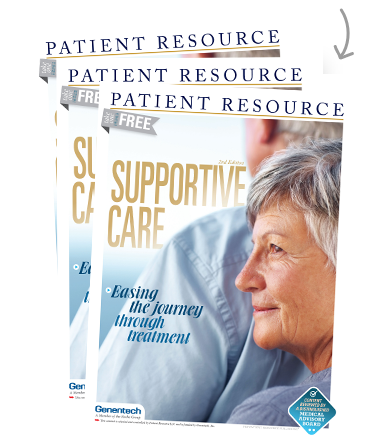Lymphedema
Lymphedema is an excess of lymph fluid in body tissues that causes abnormal swelling of a part of the body. It is most common in an arm or leg, but it can also happen in the neck, face, mouth, abdomen, groin and other parts of the body. General swelling can also occur, depending on the type of disease and treatment. The amount of swelling ranges from a mild increase to extreme swelling that interferes with motion or function of the affected area (see Figure 1).

To understand lymphedema, it helps to understand the lymph system, which is a major part of your immune system. The lymphatic system helps to protect your body from infection and disease. It consists of lymph, lymphoid tissue, lymph nodes and lymph vessels.
Lymph is fluid that carries cells and travels through lymph vessels. Lymphoid tissue is mostly made up of white blood cells (lymphocytes). It is in many parts of your body, such as the lymph nodes, bone marrow, thymus, digestive tract, and adenoids and tonsils. Lymph vessels connect hundreds of lymph nodes, which are structures in your neck, underarm, chest, abdomen and groin that help filter substances through lymph.
The signs of lymphedema include the following:
- Swelling in the breast, chest, shoulder, arm, hand, leg or foot
- An extremity or affected area that feels full or heavy
- Changes in how the skin in an area looks (red) or feels (tight and hard)
- New aching or discomfort in an area
- Less movement or flexibility in nearby joints (shoulder, hand, wrist, hip or knee)
- Difficulty fitting your arm into a jacket or shirt, or tightness of jewelry on your hand or wrist
- For women, difference in how your bra fits
What causes lymphedema?
Lymphedema occurs when lymph cannot flow normally through lymph vessels because of damage to lymph nodes or lymph vessels or removal of lymph nodes. It is typically caused by surgery to remove lymph nodes, radiation therapy that affects the lymph nodes and lymph vessels, or a blockage of the lymph nodes or vessels caused by cancer.
Treatment of lymphedema is determined by the stage and severity of the condition.
Stage 0: The lymphatic system may have been damaged but swelling may not be visible yet. People may feel a heaviness or aching in the affected body part.
Stage I: Swelling is now visible but there are no signs of skin thickening or scarring. It can be reduced by keeping the affected limb raised and using compression.
Stage II: Skin may or may not indent when pressed. Moderate to severe skin thickening is present. Compression and keeping the limb raised may help but will not reduce swelling.
Stage III: The skin is now very thick and hardened. The limb is swollen in size and volume, and the skin has changed texture. This stage is permanent.
When does lymphedema typically occur?
Lymphedema can develop from weeks to many years after treatment begins.
How you can manage lymphedema
Management of lymphedema focuses on ways to minimize swelling and control discomfort. Avoid constriction of the area by only wearing loose clothes and loose jewelry on the affected side, carrying a handbag or backpack on the unaffected side, keeping legs uncrossed while seated and avoiding socks or stockings with tight bands. If you have lymphedema of an arm, avoid having injections (blood draws or vaccines) and blood pressure measurements in that arm. It is also important to keep blood from pooling in the affected limb. When possible, elevate the affected limb to a point higher than the heart; do not swing the limb quickly in circles or let the limb hang down; and do not apply heat to the limb.
Prevention of infection is an important part of managing lymphedema because infection causes your body to respond by making more lymph, and if the lymph nodes and/or vessels are damaged, the excess fluid has nowhere to go. Keep your skin and nails clean and well-maintained.
To decrease your risk of developing lymphedema after treatment, it is important to regain full range of motion by using exercises suggested by your physician.
When to call your health care provider
You should talk about the possibility of lymphedema when discussing the risks and benefits of treatment, then report symptoms that persist for 1 to 2 weeks so treatment can begin promptly. If left untreated, it can cause more swelling, weakness, difficulty moving your arm or leg. You may also develop itchy, red, warm skin, wounds that do not heal, an increased risk of skin infections causing pain, and thickening or hardening of the skin.
A certified lymphedema therapist (CLT) may develop a treatment plan for you that includes some or all of the following:
- Complete decongestive therapy (CDT): a combination of skin care, manual lymphatic drainage, exercise and compression
- Compression garments to put pressure on affected areas
- Elevation
- Exercise
- Manual lymphatic drainage (MLD), a special type of gentle skin massage
- Medications for infection or pain
- Physical therapy
- Skin care to keep the area clean and moisturized
Contact a member of your health care team immediately if you have one or more of these signs of lymphedema:
- The affected limb or body area feels hot, looks red or swells suddenly.
- You have a fever (oral temperature of 100.4 °F or higher) that is not related to a cold or flu.



